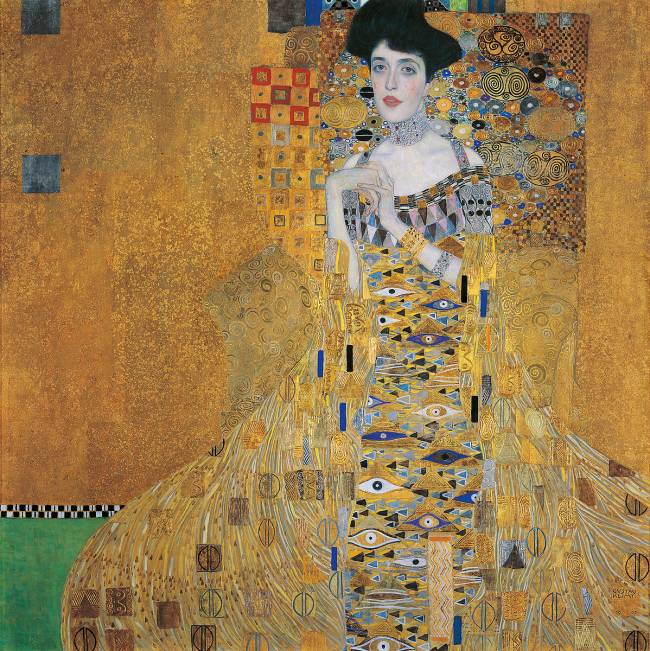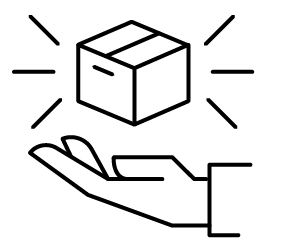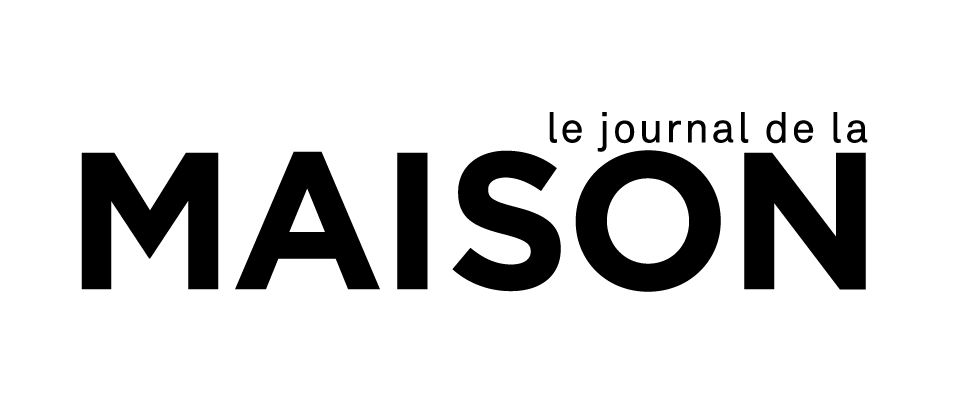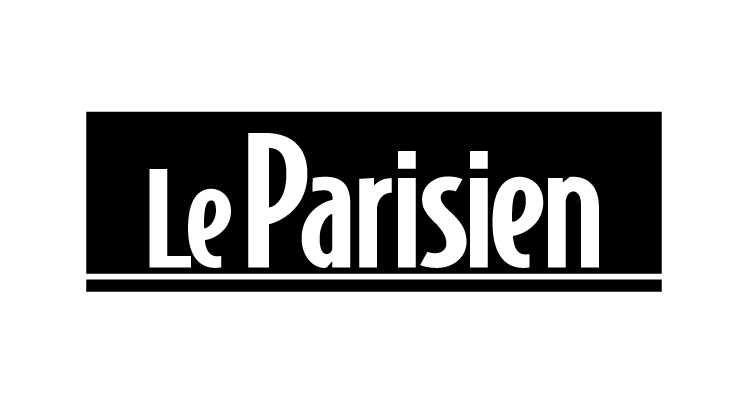Shop art print and framed art Portrait of Adéle Bloch-Bauer by Gustav Klimt
Customise
Your art print
Portrait of Adéle Bloch-Bauer OF Gustav Klimt
-20%Portrait of Adéle Bloch-Bauer
The whirlwind of seduction in Gustav Klimt's portrait of Adèle Bloch-Bauer
One of the most famous and emblematic paintings by Austrian artist Gustav Klimt is undoubtedly the portrait of Adèle Bloch-Bauer. This painting occupies a special place in the artist's career, as it was produced between 1903 and 1907 at a time when Klimt was particularly prolific, and when his style was beginning to evolve towards a more modern and daring aesthetic.
Adèle Bloch-Bauer, muse and muse
A cultivated, socialite woman, Adèle Bloch-Bauer was part of Viennese high society at the time. She married Ferdinand Bloch, a wealthy industrialist, in 1899 and thus became the sister-in-law of art patron and collector Gustav Bloch (who later took the name Bauer). It was through this family connection that the young woman crossed paths with Klimt and asked him to paint her portrait.
Gustav Klimt, an innovative and provocative artist
As for Gustav Klimt, he was already a key figure on the Austrian art scene at this time. Founder of the Vienna Secession movement in 1897, he gradually moved away from academicism to adopt a more personal style, marked by great formal freedom and a fascination with ornamentation. His work often provoked controversy, not least because of its sensuality and erotic themes.
A bold and bewitching composition
The portrait of Adèle Bloch-Bauer is a veritable manifesto of the aesthetic developed by Klimt during this period. The canvas is characterised by its imposing format (138 x 138 cm) and the richness of its motifs, which brilliantly blend figurative and abstract elements.
A captivating face at the heart of a swirl of gold
The first element that strikes the viewer is unquestionably the face of Adèle Bloch-Bauer, whose fine, delicate features seem haloed by an imposing crown-like head of dark hair. The young woman's eyes, imbued with melancholy, captivate the attention and contrast with the profusion of motifs that surround her.
In fact, Adèle's body, as well as the armchair on which she is sitting, are covered in a fold of gold and patterns, the complexity of which is properly mesmerising. The artist's choice to depict Adèle in a dress of indefinable contours, enveloped in a swirl of ornamentation, testifies to her desire to sublimate her model and make her an emblematic figure of feminine beauty.
A harmonious balance of form and colour
Although the portrait of Adèle Bloch-Bauer is dominated by the colour gold, Klimt shows great mastery in his composition by introducing touches of blue, green and red to balance the canvas. These colourful elements are harmoniously distributed and help to give rhythm and depth to the whole.
Hidden symbols and connotations
Beyond its visual seduction, the portrait of Adèle Bloch-Bauer also invites us to decipher the many symbols and allusions it contains. Certain elements, such as the stylised eyes or the geometric motifs, make direct reference to Egyptian and Byzantine art, of which Klimt was fond.
A work marked by the seal of love
It is also tempting to see in this painting a representation of the intimate and passionate relationship that would have bound Klimt to his muse. Indeed, many clues suggest that the artist was deeply in love with Adèle.
The heart-shaped motifs that dot the canvas can thus be interpreted as so many concealed declarations of love. Similarly, the intertwined initials "A" and "K" at the top left of the painting seem to testify to the complicity between the painter and his model.
A turbulent destiny for a mythical work
The portrait of Adèle Bloch-Bauer has had a history as tumultuous as it is fascinating. Confiscated by the Nazis during the Second World War, it was returned in 2006 to the heirs of the Bloch-Bauer family after a long legal battle. That same year, the painting was sold at auction for the record sum of $135 million, making it one of the most expensive works of art ever acquired.
.Now on display at New York's Neue Galerie museum, the portrait of Adèle Bloch-Bauer continues to fascinate and seduce art lovers the world over. An emblem of Gustav Klimt's creative genius, this work remains a poignant testament to the beauty and sensuality that characterised Viennese art in the early 20th century.
This artwork is a painting from the modern period. It belongs to the art nouveau styles and symbolism styles.
« Portrait of Adéle Bloch-Bauer » is kept at Osterreichische Galerie Belvedere, Vienna, Austria.
Find the full description of Portrait of Adéle Bloch-Bauer by Gustav Klimt on Wikipedia.



































